Marble Gobies
Sleepers and marble gobies belong to the Eleotridae family. They are distributed worldwide mostly in tropical and subtropical area. They have separate pelvic fins, or fused to various extents. There are 2 - 8 flexible dorsal spines and 25 - 28 vertebrae.
There are 33 genera and about 171 species worldwide. Malaysia has about 6 species.
There are 33 genera and about 171 species worldwide. Malaysia has about 6 species.
Scientific Name: Butis gymnopomus (Bleeker, 1853)
English Name: Sleeper Goby, Striped Crazy Fish
Malay Name | Nama Melayu Malaysia: Ikan Ubi Puntong, Puntang, Tungulian
Thai Name | ชื่อสามัญภาษาไทย: ปลาบู่เกล็ดแข็งเขียว (Plā bū̀ kel̆d k̄hæ̆ng k̄heīyw)
Main Identification Features: Bony irregular ridge or row of spiny serrations above eye and on top of snout. Lower jaw distinctly anteriormost. Flat head, oval shape eyes and elongated body. Yellowish in colour and caudal fin with dark striations.
Size: Maximum total length about 12 cm.
Habitat and Ecology: Occurs in estuarine habitats and in rivers.
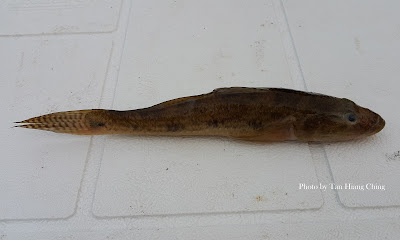
Scientific Name: Ophiocara porocephala (Valenciennes, 1837)
English Name: Northern Mud Gudgeon, Spangled Gudgeon
Malay Name | Nama Melayu Malaysia: Ikan Ubi Belontok
Thai Name | ชื่อสามัญภาษาไทย: ปลาบู่หัวมัน (Plā bū̀ h̄ạw men)
Main Identification Features: Head and body dark. Second dorsal and caudal fin spotted.
Size: Maximum total length about 35 cm, commonly 22 cm.
Habitat and Ecology: Occurs in estuaries, mangroves and the lower parts of rivers, often upstream from the tidal zone. Feeds mainly on large benthic crustaceans and small fishes.
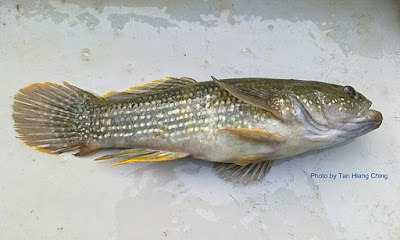

Scientific Name: Oxyeleotris marmorata (Bleeker, 1852)
English Name: Marble Goby
Chinese Name | 鱼类中文名: 笋壳鱼 (Sǔn ké yú), 顺壳鱼 (Shùn ké yú), 蓝哥鱼 (Lán gē yú), 林哥鱼 (Lín gē yú)
Malay Name | Nama Melayu Malaysia: Ikan Ketutu, Haruan Hantu, Bakut, Ubi
Thai Name | ชื่อสามัญภาษาไทย: ปลาบู่จาก (Plā bū̀ cāk), ปลาบู่ทราย (Plā bū̀ sāy)
Local Hokkien: Soon Hock
Main Identification Features: Mouth cleft directed upwards. Colouration variable depending on the habitat. Large dark blotches all over the body. Fins are marked with dark tinges alternate with bright colour.
Size: Maximum total length about 65 cm, commonly 30 cm.
Habitat and Ecology: Occurs in various wetlands, including rivers, lakes, ponds, reservoirs, canals, swamps and flooded forests, usually areas of little or no water movement. Feeds on small fishes, shrimps, aquatic insects, molluscs and crabs.

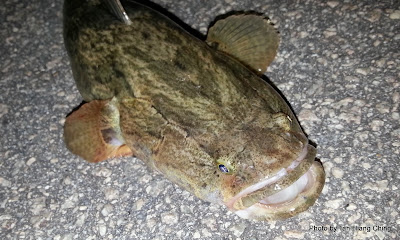
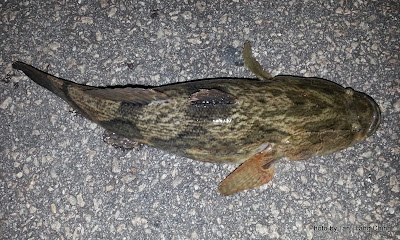
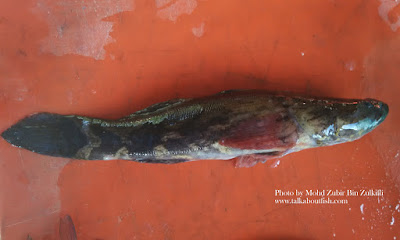

English Name: Sleeper Goby, Striped Crazy Fish
Malay Name | Nama Melayu Malaysia: Ikan Ubi Puntong, Puntang, Tungulian
Thai Name | ชื่อสามัญภาษาไทย: ปลาบู่เกล็ดแข็งเขียว (Plā bū̀ kel̆d k̄hæ̆ng k̄heīyw)
Main Identification Features: Bony irregular ridge or row of spiny serrations above eye and on top of snout. Lower jaw distinctly anteriormost. Flat head, oval shape eyes and elongated body. Yellowish in colour and caudal fin with dark striations.
Size: Maximum total length about 12 cm.
Habitat and Ecology: Occurs in estuarine habitats and in rivers.

Scientific Name: Ophiocara porocephala (Valenciennes, 1837)
English Name: Northern Mud Gudgeon, Spangled Gudgeon
Malay Name | Nama Melayu Malaysia: Ikan Ubi Belontok
Thai Name | ชื่อสามัญภาษาไทย: ปลาบู่หัวมัน (Plā bū̀ h̄ạw men)
Main Identification Features: Head and body dark. Second dorsal and caudal fin spotted.
Size: Maximum total length about 35 cm, commonly 22 cm.
Habitat and Ecology: Occurs in estuaries, mangroves and the lower parts of rivers, often upstream from the tidal zone. Feeds mainly on large benthic crustaceans and small fishes.


Scientific Name: Oxyeleotris marmorata (Bleeker, 1852)
English Name: Marble Goby
Chinese Name | 鱼类中文名: 笋壳鱼 (Sǔn ké yú), 顺壳鱼 (Shùn ké yú), 蓝哥鱼 (Lán gē yú), 林哥鱼 (Lín gē yú)
Malay Name | Nama Melayu Malaysia: Ikan Ketutu, Haruan Hantu, Bakut, Ubi
Thai Name | ชื่อสามัญภาษาไทย: ปลาบู่จาก (Plā bū̀ cāk), ปลาบู่ทราย (Plā bū̀ sāy)
Local Hokkien: Soon Hock
Main Identification Features: Mouth cleft directed upwards. Colouration variable depending on the habitat. Large dark blotches all over the body. Fins are marked with dark tinges alternate with bright colour.
Size: Maximum total length about 65 cm, commonly 30 cm.
Habitat and Ecology: Occurs in various wetlands, including rivers, lakes, ponds, reservoirs, canals, swamps and flooded forests, usually areas of little or no water movement. Feeds on small fishes, shrimps, aquatic insects, molluscs and crabs.




